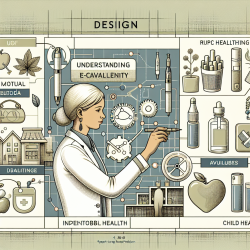Introduction
In the realm of pediatric speech-language pathology, informed consent is not just a legal obligation but a cornerstone of ethical practice. The process ensures that parents and guardians understand the interventions proposed for their children, enabling them to make informed decisions. A recent study titled "An instrument for assessing the quality of informed consent documents for elective procedures: development and testing" offers valuable insights into improving the quality of informed consent documents, which can be adapted to enhance practices in pediatric speech-language pathology.
Understanding the Research
The study conducted by Spatz et al. (2020) aimed to develop a tool for assessing the quality of informed consent documents. The researchers identified 53 elements crucial for informed consent quality, categorized into three domains: content, presentation, and timing. They then selected 15 high-priority elements, of which eight were feasible to measure, to form an abstraction tool. This tool achieved high reliability in assessing informed consent documents across various hospitals.
Key Takeaways for Practitioners
For practitioners in pediatric speech-language pathology, the following insights from the study can be instrumental in enhancing informed consent processes:
- Content Quality: Ensure that informed consent documents clearly describe the proposed interventions, potential benefits, risks, and alternatives. Tailoring this information to the specific needs and conditions of the child can significantly enhance understanding and decision-making.
- Presentation: Documents should be legible and written in plain language to ensure comprehension by parents and guardians. This includes using a font size and style that is easy to read and avoiding medical jargon.
- Timing: Providing informed consent documents well in advance of the intervention allows parents ample time to review the information, consult with family members, and seek additional opinions if necessary.
Implementing Improvements
To implement these improvements, practitioners can start by reviewing their current informed consent documents against the elements identified in the study. Consider engaging with parents and guardians to gather feedback on the clarity and comprehensiveness of the information provided. Additionally, training staff on the importance of informed consent and effective communication strategies can further enhance the process.
Encouraging Further Research
While the study provides a robust framework for assessing informed consent quality, there is always room for further research, particularly in the context of pediatric speech-language pathology. Practitioners are encouraged to explore how informed consent processes can be tailored to meet the unique needs of children and their families, potentially leading to the development of specialized tools and guidelines.
Conclusion
Improving the quality of informed consent documents is a vital step towards ensuring ethical and effective practice in pediatric speech-language pathology. By adopting data-driven approaches and continuously seeking to enhance communication with families, practitioners can foster trust and collaboration, ultimately leading to better outcomes for children.
To read the original research paper, please follow this link: An instrument for assessing the quality of informed consent documents for elective procedures: development and testing.










